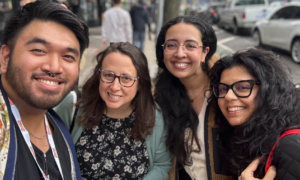By Mark Wright, OD, FCOVD,
and Carole Burns, OD, FCOVD

Nov. 11, 2020
Americans may be done with COVID-19, but the virus is far from done with us–and that includes eyecare practices. Here are what the latest findings from Jobson Optical Research’s COVID-19 ECP impact survey tell us about the greatest difficulties posed by the ongoing crisis, and our recommendations for managing those challenges.
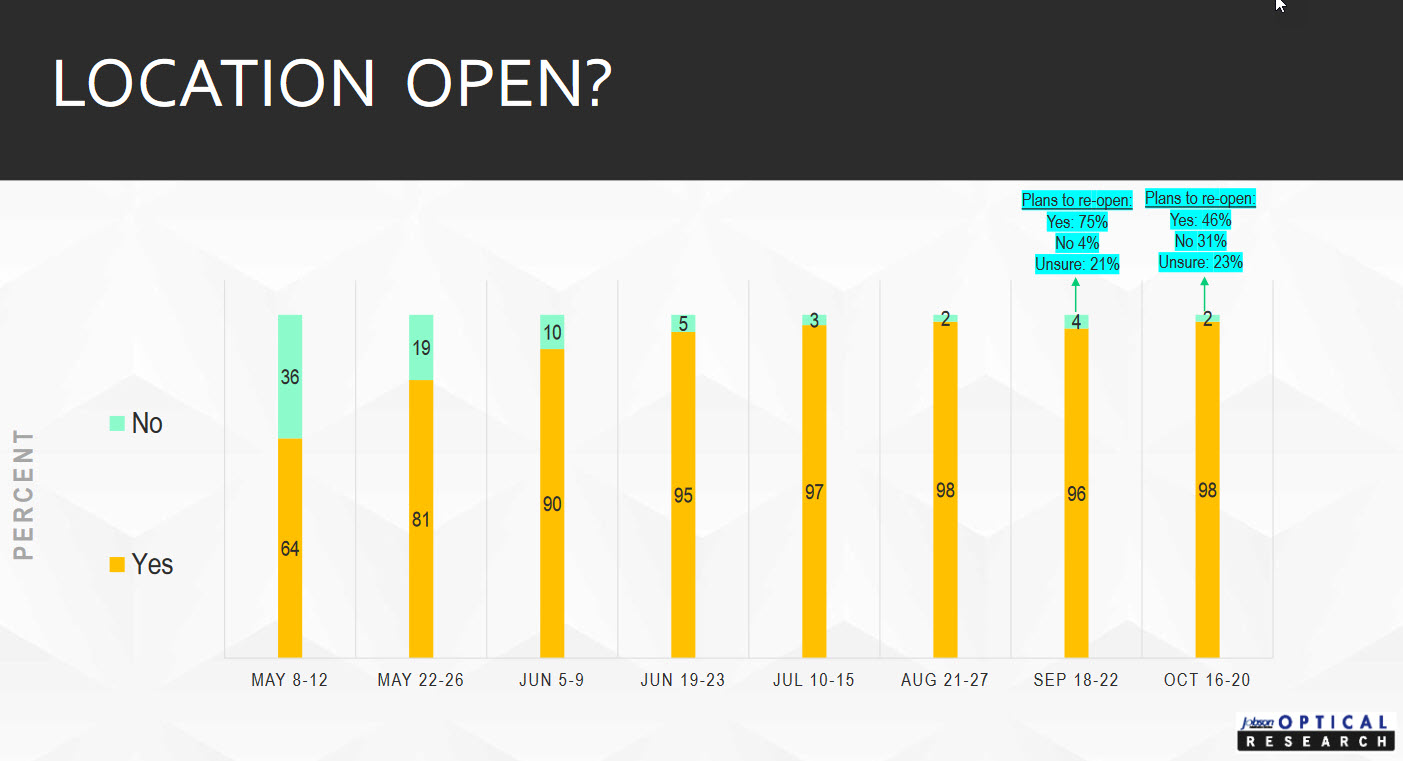
Ninety-eight percent of practices ae now open. Of the 2 percent that are not yet open, 46 percent of that group plan to open, but 31 percent do not plan to open back up.
There’s another 23 percent (of that 2 percent who are not yet open) that are unsure if they will open again.
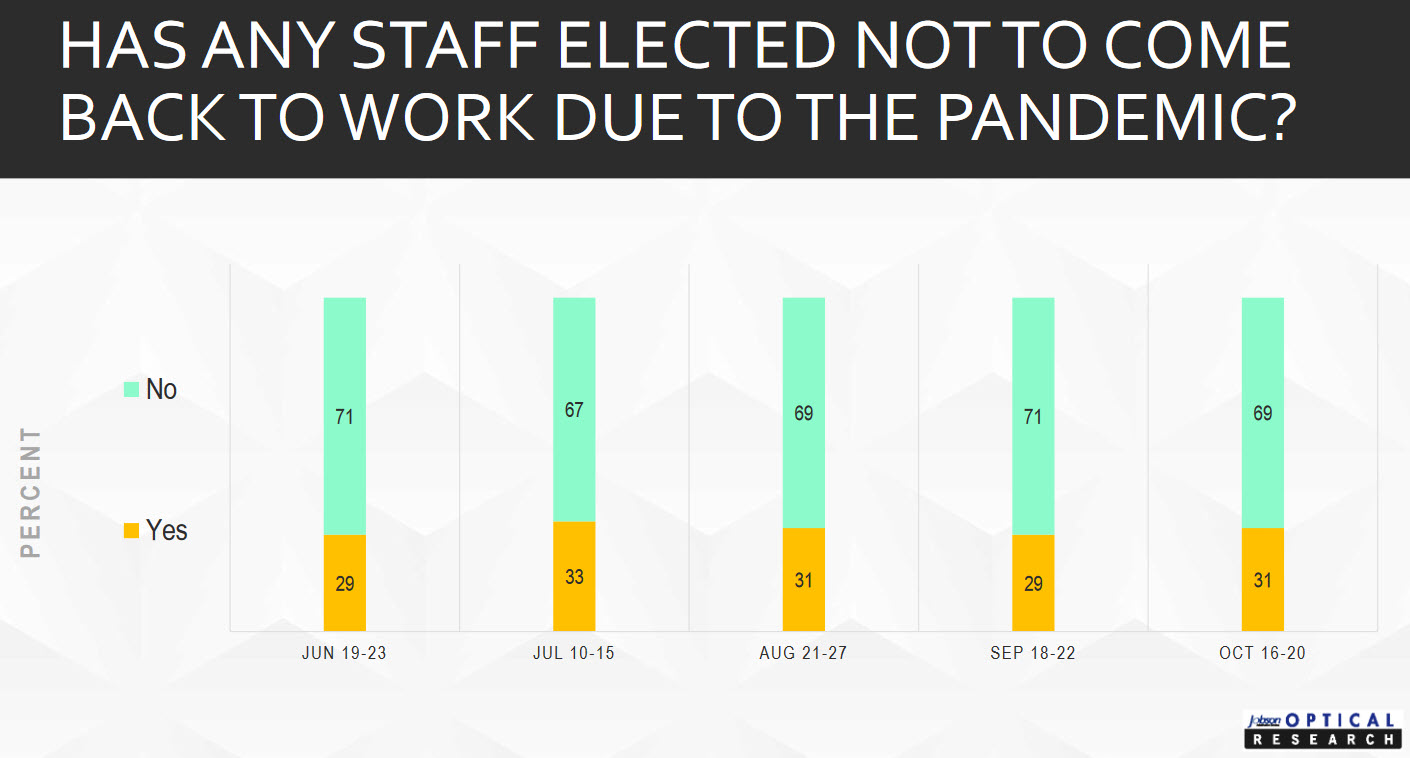
Of the practices that have opened back up, 31 percent of staff elected not to come back to work due to the pandemic. This number has been very consistent from June to present. Having close to one-third of your workforce leave creates a huge hiring and training problem.
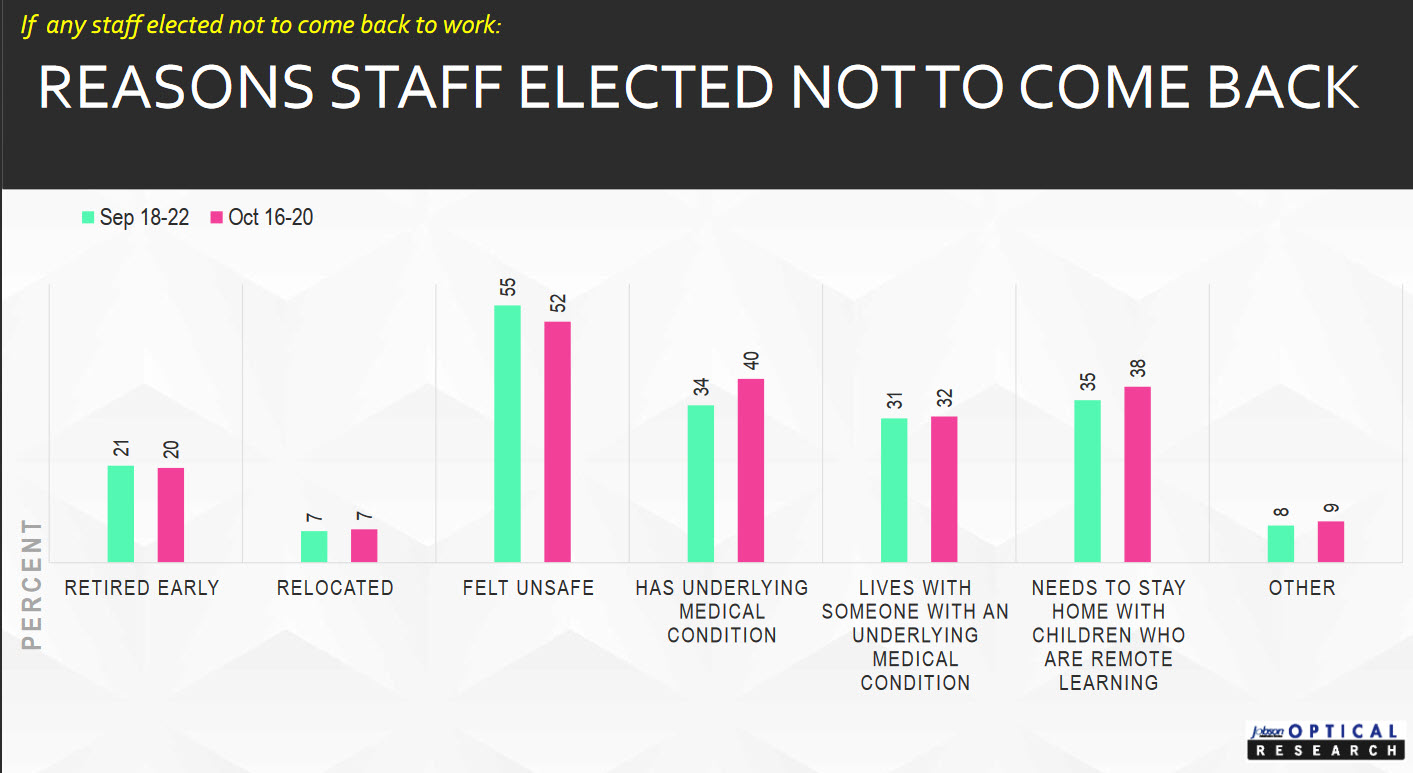
This chart shows the reasons that staff elected not to come back. Notice that fear is still the number one issue. The great news is this week Pfizer, and its collaborator BioNTech, announced positive efficacy results about its vaccine, which showed more than 90 percent effectiveness in preventing COVID-19 in their Phase 3 trial. This will help move the world back to a more normal operating status.
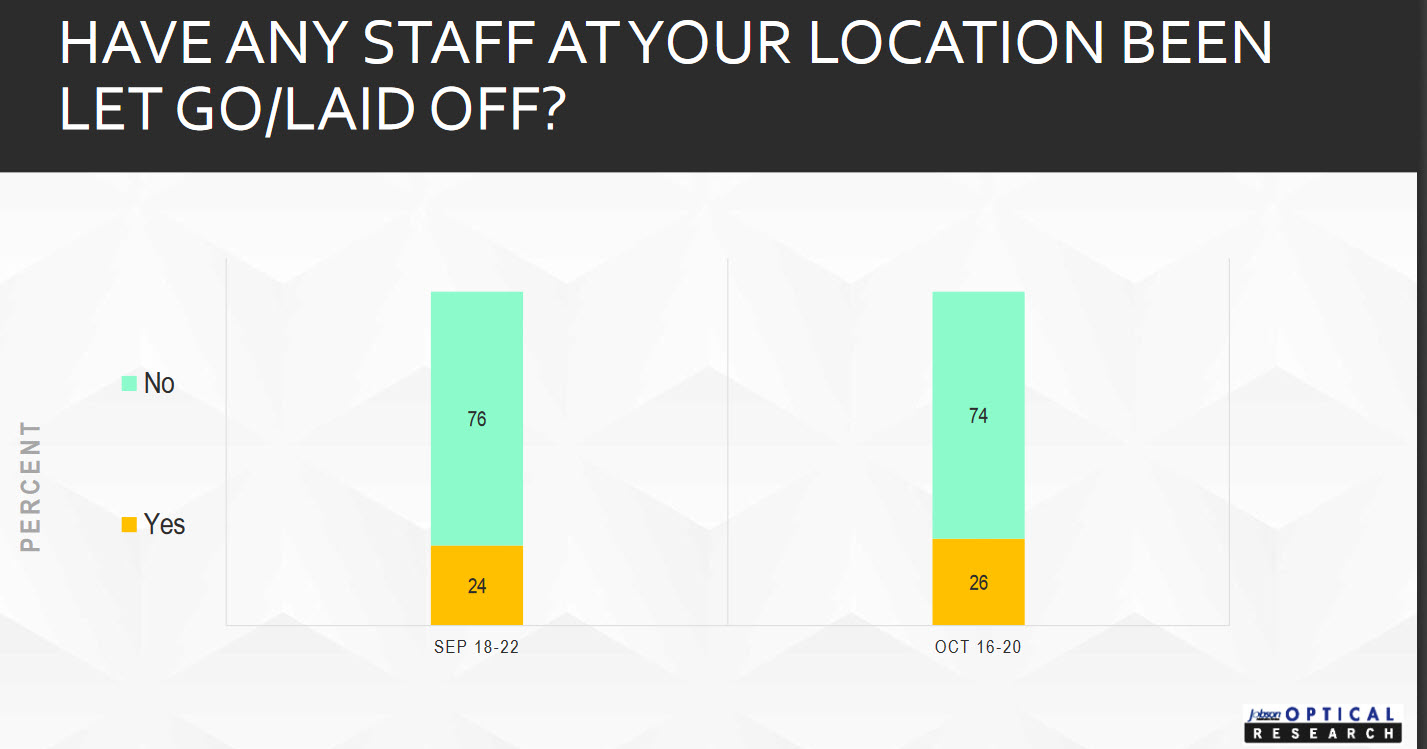
Twenty-six percent of staff has been laid off. Some of this is due to the pandemic, but anecdotally, we are hearing that some staff are being let go due to attendance problems. That’s a trend to keep an eye on in your practice. No matter the reason, when the practice is short-staffed it causes problems for everyone. There is definitely a negative impact on patient care when this happens.
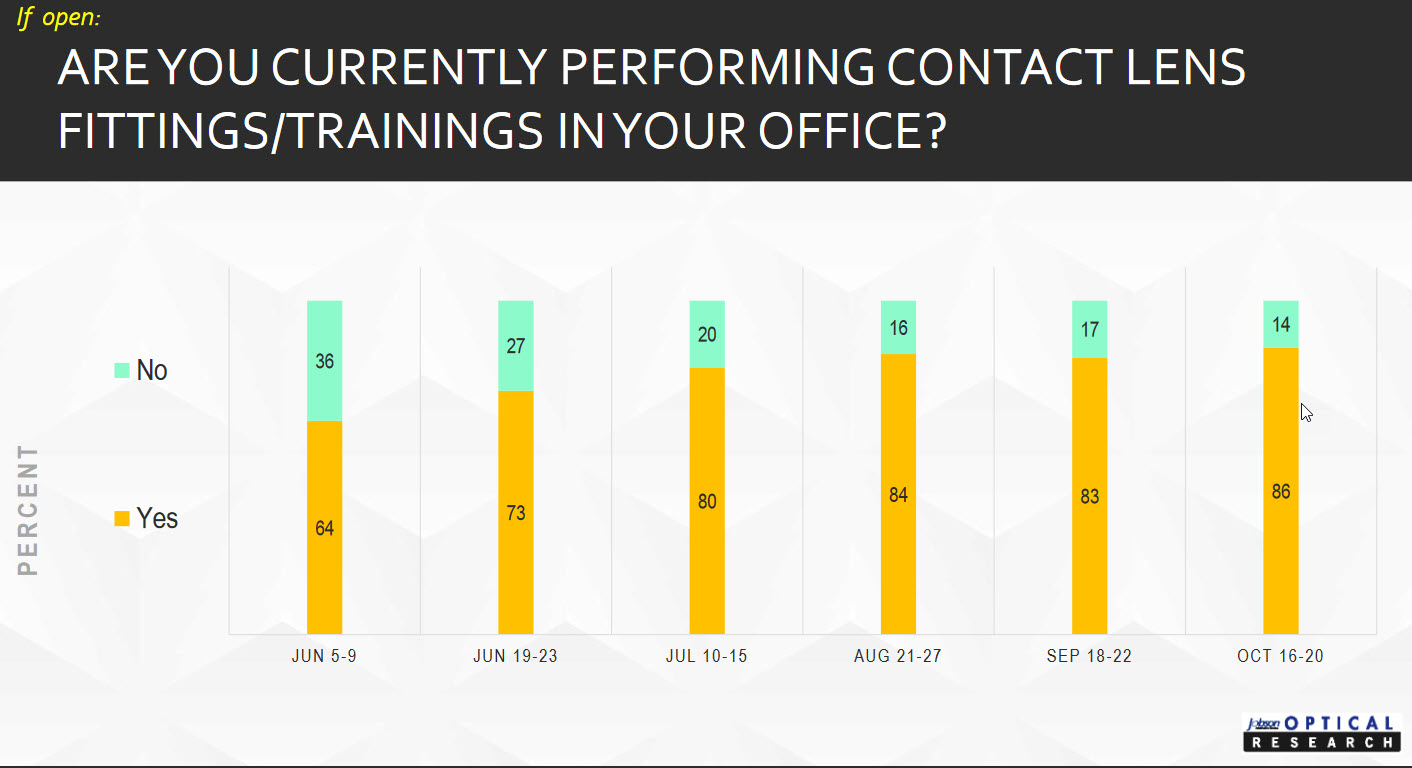
Of the practices that are open, 86 percent are currently performing contact lens fittings and trainings in the office. The 14 percent, who are not, might be driven by fear. That is understandable. Perhaps this will be resolved when the COVID vaccine becomes available.

We found this data to be interesting. When the pandemic was worse, 90 percent of practices integrated telemedicine into the practice. Now, that number has dropped to a little more than one-half of practices. This downward trend seems to be continuing based on the practices we’ve been talking to. Less emphasis is being placed on telemedicine and more on in-office care.
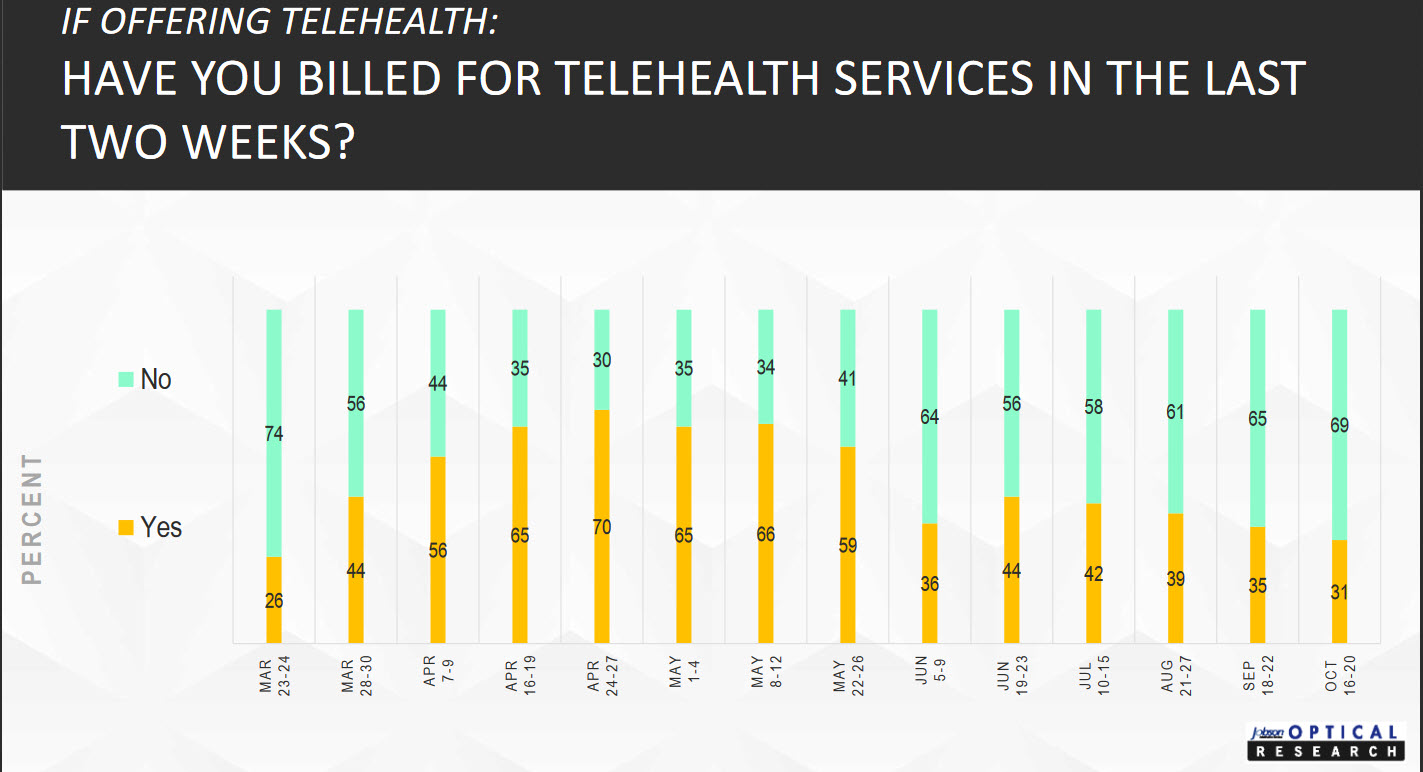
This data reinforces the previous chart. Of the practices offering telemedicine, only 31 percent are billing for it (down from a high of 70 percent). Fifty-six percent of practices are offering telemedicine, but only 31 percent are billing for it.
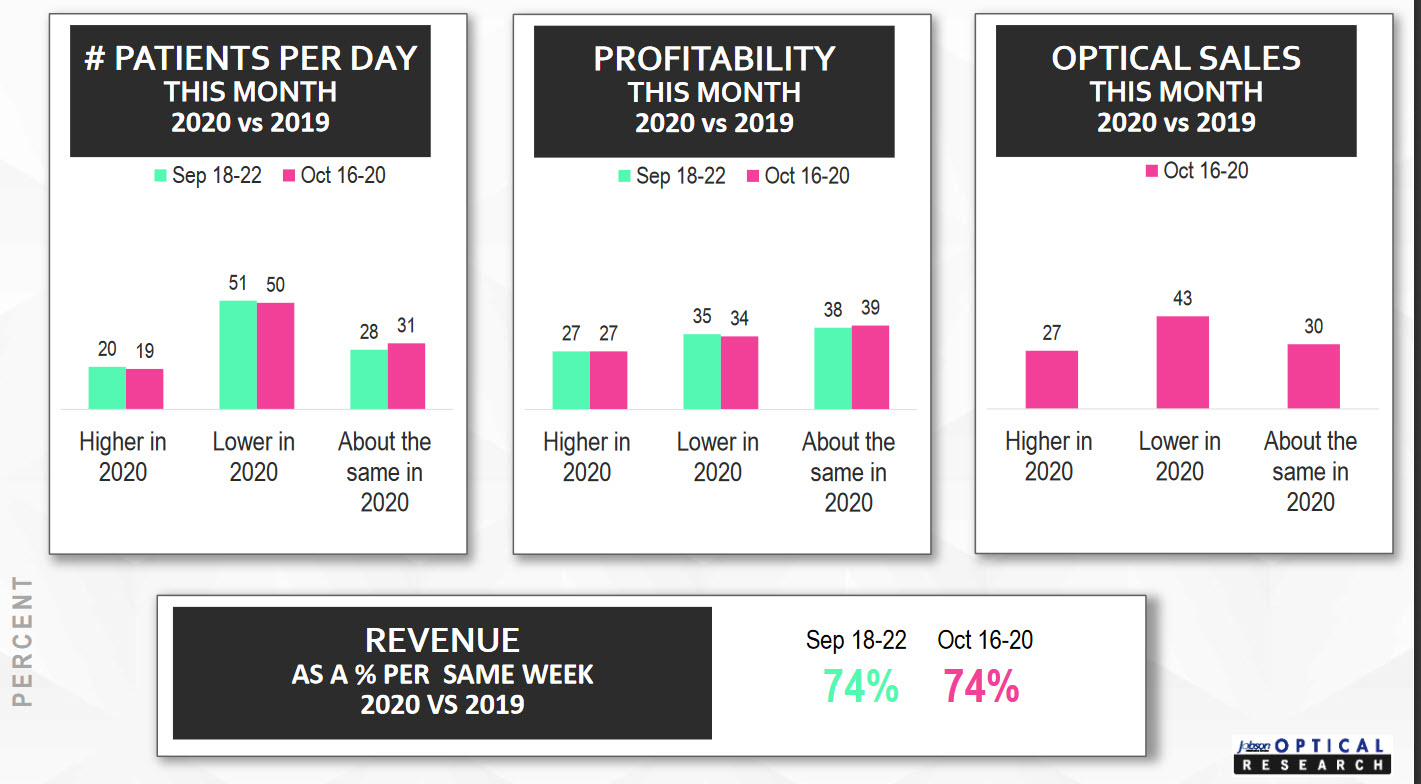
This constellation of data is helpful. Compare your practice numbers to the data in this chart. This is telling us that 74 percent of practices have worked back up to the same revenue as they did in 2019, and 66 percent (39 percent + 27 percent) of practices have worked back up to the same or higher profitability as they had a year ago. What are your numbers?

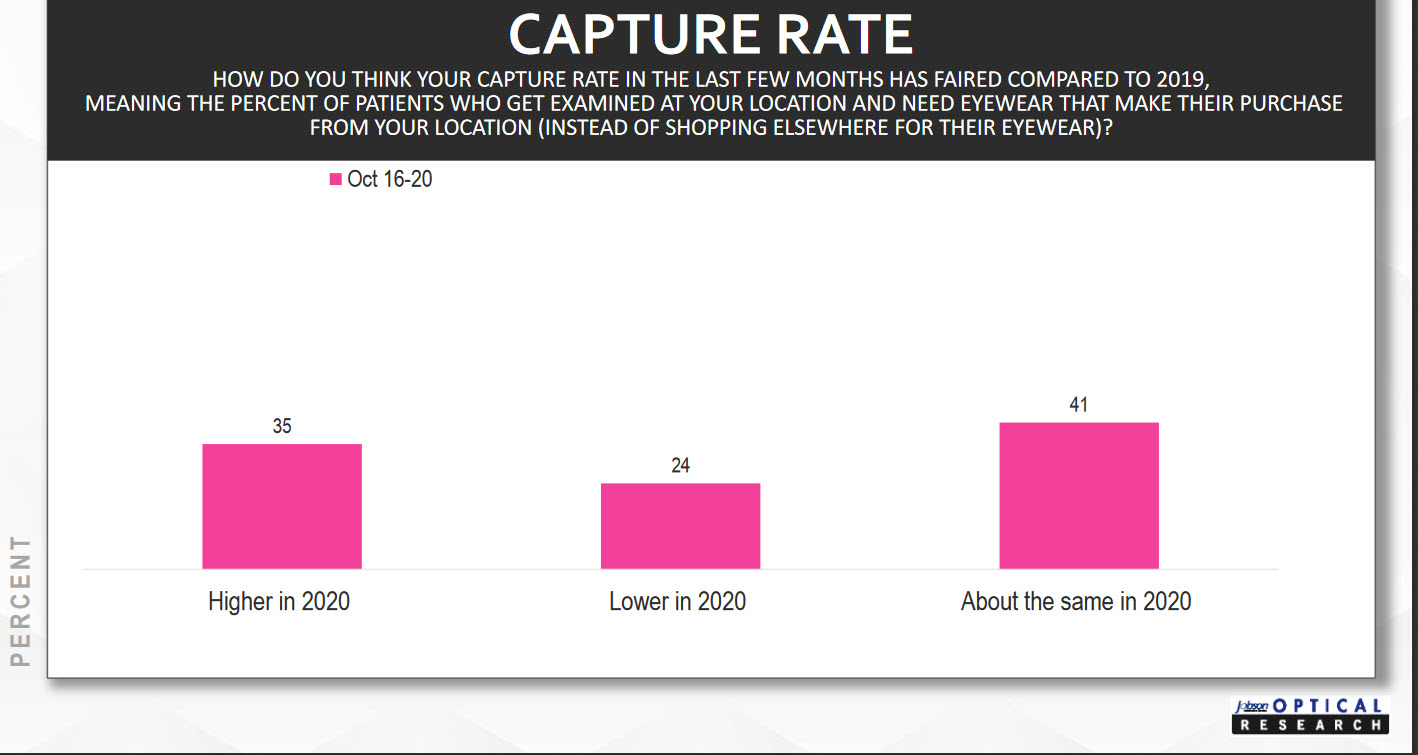
This is a number you should always be measuring. According to the above data, 76 percent of practices have the same or higher capture rate as last year. Twenty-four percent of practices have a lower capture rate. There are two questions that need to be answered:
1) What is causing the higher capture rate in 2020?
2) What is causing the lower capture rate in 2020?
For the higher numbers, knowing the drivers means you can keep the capture rate high and perhaps even drive it higher still. Likewise, knowing what is driving the capture rate lower permits you to come up with solutions to fix the problem. Don’t accept the lazy answer that it is just the pandemic that is driving the numbers. Find specific answers.
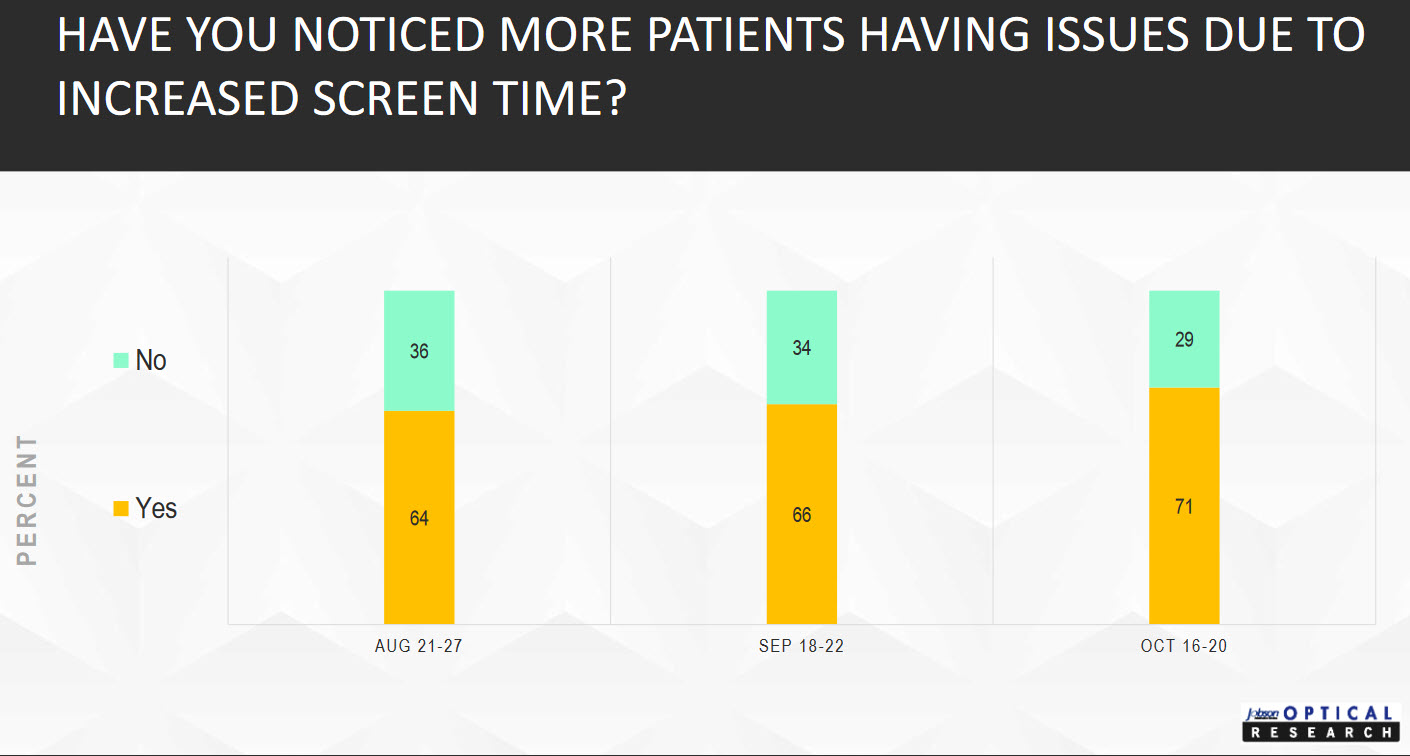
Pain is a motivator. Notice the increase in issues over time. Patients are having more issues now than they had a couple months ago. We have solutions for problems that come from increased screen time.
One of the common statements we hear from patients is when working from home they are more apt to work harder and longer than when they were working in the office. They finish projects now rather than, when working in the office, stopping and picking it up tomorrow when they come in.
Other Articles to Explore
What marketing campaigns are you doing to let your patients know that you can help with the issues that come from increased screen time?
>>Click HERE to download the latest findings from Jobson Optical Research on how the pandemic is impacting ECP practices>>
References
i. https://www.pfizer.com/news/hot-topics/albert_bourla_discusses_covid_19_vaccine_efficacy_results






